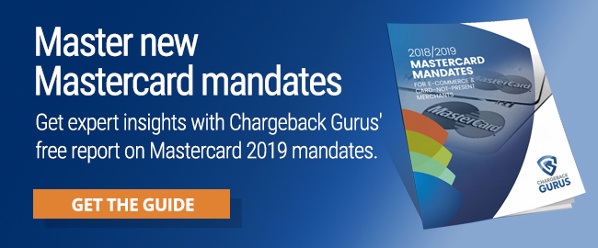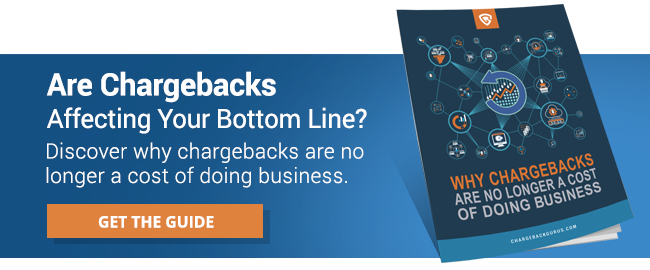Voice Assisted Retail, the next generation of Fraud
There are days when being a player in the ecommerce business can feel like you’re still stuck in high school, chasing trends that are moving faster than you can keep up with.
Even the basic ways we interface with technology keeps changing, faster and faster each time.
- Typing? A thing of past.
- Clicking? Strictly for the retro enthusiasts.
- Tapping and swiping? We’re (almost) over it.
- Want to know what the most up-to-date way to operate your devices is?
Just ask Alexa or Siri.
Voice assisted devices have been making big inroads in consumer markets in recent years, now that they’re sophisticated enough to understand us even in a regular, casual manner of speaking. The average person is getting fairly comfortable with the concept of telling a smart device to turn on their house lights, play some music, or send a quick text message.
The question for ecommerce merchants is, will consumers trust voice-assisted devices with their money?
In other words, will they be willing to use voice commands alone to make purchases with their smart devices—and if so, what will the implications be for the online payments industry?
To answer the first question, if history tells us anything, it’s that embracing new technologies is usually a matter of when, not if. Not everyone with an Alexa is using it to place Amazon orders yet, but the numbers are only going up and up.
More than 40% of regular voice-assisted technology users have already tried voice shopping, and there’s tremendous room for adoption rates of devices like these to grow.
High school is over, so don’t stay on the sidelines when voice-assisted shopping is on the verge of becoming the next big thing.
 The better you can prepare yourself for the challenges and opportunities voice-assisted shopping will bring, the easier it will be for your business to ride the crest of this new wave instead of being swept away by it.
The better you can prepare yourself for the challenges and opportunities voice-assisted shopping will bring, the easier it will be for your business to ride the crest of this new wave instead of being swept away by it.
What you need to know about Voice Assistants
In the early days of ecommerce, completing an online purchase was a bit of a process. It was entirely common to load a separate page for every step of checking out.
This may have been partly due to the technological limitations of the early web, but it’s also true that consumers were far more reticent about online shopping when it was first introduced. A lengthy checkout process communicated caution and security to consumers.
Now that ecommerce is everywhere, speed and convenience is more valued. If it takes too long to check a customer out, you might lose them. No wonder retailers are excited about the possibilities of voice-assisted shopping.
One product category where shopping with a voice assistant really has the potential to win consumers over is consumables. Nobody likes shopping for toilet paper and laundry detergent, but life in a household can quite quickly grind to a halt without such goods.
Consumers relish the idea of ordering consumables with a spoken command instead of having to gird up for a trip to Costco.
Nearly a quarter of consumers—many of whom don’t even own a voice assistant device yet—can picture themselves using voice-assisted shopping to purchase groceries and household products in the near future.
If you’re still not convinced that voice shopping will be here to stay, consider how much of a game-changer this way of shopping will be to people with disabilities, the elderly, and other shoppers with mobility issues.
More and more consumers will fall into these categories in the years ahead, and merchants will be well-advised to pay attention to their needs.
Drawbacks of Voice-Assisted Shopping
What’s not to like about voice-assisted technology? A large part of the problem is just overcoming consumer prejudices. Some people have had frustrating experiences with earlier iterations of voice-recognition technology, where the quality of interpretation was poor and background noise could render the whole endeavor pointless. As today’s hardware and software continues to improve, these consumers will likely come around.
For others, however, the technology itself is the issue. Privacy and security concerns are common. While consumers generally like the idea of using their voice to authenticate their identity, there are justifiable concerns that sound qualities can be copied or imitated.
Some of the first “hackers” got their start by imitating telephone system tones to make free calls, and anyone who saw the 1992 movie Sneakers has seen a voice password system thwarted by a cleverly-obtained audio recording.
In reality, we’re a long way from 1992 and biometric data readers are much harder to fool than the human ear. Nevertheless, when voice shopping hits the mainstream, fraudsters will find vulnerabilities to exploit, and chargebacks will follow.
This isn’t a reason for merchants to refuse to embrace this technology, but they should be prepared for the security issues that will inevitably have to be worked out.
Conclusion
Some good news for smaller merchants is that the big retailers like Amazon will likely have worked out many of the kinks in voice-assisted shopping by the time the technology is widely available and affordable to the rest of us.
The biggest problem we can foresee at this time is consumers thinking that voice assistants will be an easy place to lay the blame when they’re engaging in “friendly fraud” and trying to dispute a legitimately authorized charge. It’s easy to say that a voice assistant misheard you, or responded to another person’s voice. Even when these assistants make retrievable recordings of voice commands, some fraudsters will still be audacious enough to claim that their voice was digitally cloned.
Recordings and other documentation should be enough to invalidate disputes such as these, but only if merchants fight back, submit representments of disputed charges, and provide the evidence that proves their case. Fighting back against invalid chargebacks should be an automatic reflex for merchants.
The payments landscape is always changing as new technologies affect the way we shop and do business. With knowledge, preparedness, and the right attitude, merchants can successfully navigate these changes to take advantage of the opportunities they present.
Thanks for following the Chargeback Gurus blog. Feel free to submit topic suggestions, questions or requests for advice to: win@chargebackgurus.com




